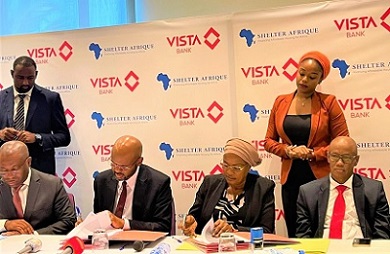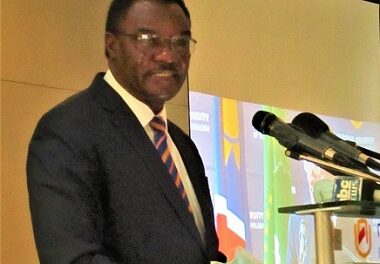
The Development Bank of Namibia has announced a facility to finance climate change adaptation, bolstering its long track record of finance with beneficial environmental and social initiatives.
Explaining the facility, DBN CEO Martin Inkumbi said it provides an affordable and tailored financing solution for climate and environmental friendly projects.
The Bank has previously financed low-carbon renewable energy generation, water reclamation for industrial use in Walvis Bay, water storage in Neckartal Dam and reclamation initiatives.
Inkumbi said that finance for climate adaptation is important, and there is a range of affordable financing instruments for such business projects. The Bank, he said, has already pioneered financing models for renewable energy, and is now setting its sights on energy and water use efficiency as well as mitigating the effects of rising temperatures.
On the topic of water, Inkumbi said that the Bank has financed large scale water infrastructures such as Neckartal Dam and Aqua Utilities which semi-purifies water for industrial use at Walvis Bay.
However, he said that in the face of prolonged droughts, there is an opportunity for enterprises to invest in water efficiency.
“Investing in technology and processes that are energy and water efficient reduces the amount of energy and water consumption per output for a business, which lowers production and or operational costs and improve profitability,” Inkumbi said.
According to Inkumbi, although water efficiency will not alleviate drought, it can lead to improvements in enterprises bottom line, in addition to preserving the environment.
“I really urged enterprises to examine their energy and water usage and related activities, and develop innovative methods to reduce their water usage and associated costs.”
He added that the Bank has experience in water reticulation for local authorities in PPPs but said there was still scope for further development in terms of water recycling, reclamation and storage in abattoirs.
On the topic of rising temperatures, Inkumbi noted that there is a twofold cost.
“The first cost is the cost of cooling facilities, and the second cost is the cost of mitigating health issues caused by rising heat. The cost of cooling facilities adds to the cost of an enterprise. It also places a burden on power generation. By constructing plants and facilities with heat dissipation in mind, these circumstances can be mitigated,” he explained.
He extended the benefits of energy efficient housing developments, explaining that incorporating heat dissipation would reduce the cost of running a household as well as improving the health of its residents. This, he said would dovetail well with the Bank’s finance for affordable housing projects.
Asked about how the facility would benefit enterprises and initiatives, Inkumbi said that there is an understandable reticence to finance projects with unfamiliar financing outcomes. This was the case when DBN pioneered finance for privately owned renewable energy. The Bank, however, de-risks innovative projects with extensive due diligence on innovation and absorbs, manages and learns from its risks. In this way, the Bank hopes to pioneer finance for climate change adaptation that will make Namibia more sustainable.
Inkumbi concluded by calling on engineers, architects, consultants and project managers to lean more towards energy and water efficient designs, and for businesses to approach the Bank for finance.
“Although you may have reservations about pitching new technologies and techniques, the DBN will give you consideration for finance if you can demonstrate their feasibility,” Inkumbi stated.
In the photo: DBN CEO Martin Inkumbi.







